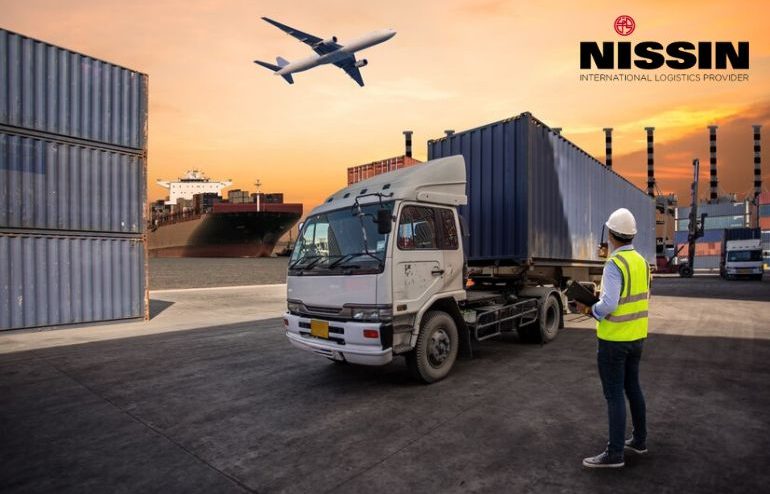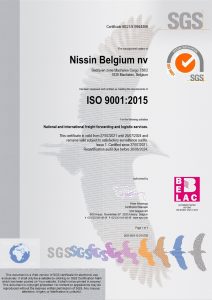Lithium-ion batteries power various devices and systems, from medical equipment to renewable energy storage solutions and electric vehicles. However, their inherent energy density poses significant challenges when it comes to transportation. As such, whether by road, sea, or air, mishandling them can lead to serious consequences.
So, we’ll learn key considerations for safely transporting lithium batteries, including packaging, regulations, and best practices. We’ll also further explore the services offered by Nissin Belgium that simplify this process.
What Makes Lithium Ion Battery Different?
Lithium-ion batteries are efficient but can be hazardous if not handled properly. If damaged or improperly packaged, these batteries can overheat, causing fires or even explosions. Because of these risks, strict rules are in place to make sure batteries are transported safely according to regulations.
Regulations Governing Lithium Battery Transportation
Lithium batteries are classified as dangerous goods, and various regulatory frameworks define how they must be handled, packaged, and labeled during transit. Here’s a rundown of key regulations to keep in mind:
1. UN 38.3: This international standard mandates safety testing for lithium batteries, including tests for altitude simulation, extreme temperature resilience, and vibration resistance. Batteries that meet UN 38.3 standards are considered safer for transport.
2. International Air Transport Association (IATA) Dangerous Goods Regulations (DGR): IATA DGR is the standard for air transport, specifying that lithium batteries must be packaged to prevent short-circuiting and overheating. Airlines often require partial charging and enforce strict labeling practices to mitigate risks in flight.
3. ADR (European Agreement Concerning the International Carriage of Dangerous Goods by Road): ADR regulations set out detailed guidelines for shipping lithium batteries by road across Europe, including secure packaging and labeling standards.
4. IMDG Code (International Maritime Dangerous Goods Code): The IMDG Code oversees the sea transport of lithium batteries, with rules that mandate secure packaging to avoid leaks and prevent reactions with other goods in cargo.
Proper Packaging and Labeling for Lithium Batteries
Packaging and labeling are essential parts of the transport process. For lithium batteries, the packaging must be sturdy enough to prevent any movement during transit. Inside the packaging, the batteries should be cushioned to avoid contact with other items that could cause short-circuiting.
Furthermore, proper labeling indicates that the contents are classified as dangerous goods and outlines essential safety precautions. These labels include warnings, such as hazard symbols for dangerous goods, to make sure that handlers recognize the associated risks and can respond appropriately in case of emergencies.
Different Types of Lithium Battery Transportation
Not all lithium battery shipments are the same, and transport requirements vary based on battery classification:
1. Standalone Lithium Ion Battery (UN3480): These batteries are shipped independently and are generally subject to the most rigorous safety standards. They require sturdy, protective packaging and precise labeling to mitigate risks.
2. Lithium Ion Battery Packed with Equipment (UN3481): Batteries in this category are packed alongside equipment but are not yet installed in the device. They still require protective packaging but are subject to slightly more relaxed standards compared to standalone batteries.
3. Contained in Equipment: Batteries already installed in devices, such as laptops or medical equipment, often fall under a more flexible set of guidelines, though protective measures are still essential.
Transporting Lithium Batteries by Different Modes
How Lithium Iron Batteries can be transported by Road, Sea, and Air: Key Methods of Transportation.
1. Road Transport: When transporting lithium-ion batteries by road within Europe, the ADR regulations are in place. These make certain that the batteries are handled properly and that packages are secured against accidents.
2. Sea Freight: Shipping lithium batteries by sea falls under the IMDG Code. Since sea transport is typically slower, it gives more time for safety precautions, but the risk of leaks or exposure to temperature changes must be addressed through proper packaging.
3. Air Transport: Air transport is the most restrictive for lithium batteries. Airlines require special handling and packaging due to the potential risks of fires. Batteries are usually required to be partially charged during air transport to reduce these risks.
Nissin Belgium’s Expertise in Lithium Battery Transport
Handling lithium battery transport requires adherence to complex regulations and safety protocols. Nissin Belgium offers expert support to streamline this process, providing logistics services that prioritize safety and compliance. Our team specializes in regulatory guidance to custom packaging to handle lithium batteries responsibly.
Key services include:
1. Specialized Packaging Solutions: Nissin Belgium creates packaging that adheres to international standards, reducing risks in transit and meeting strict regulatory requirements.
2. Expert Knowledge of Compliance: With constantly changing laws around battery transport, Nissin’s team stays up-to-date on international standards like IATA, ADR, and the IMDG Code. This knowledge simplifies the process for clients, no matter the shipping mode—road, sea, or air.
3. Complete Logistics Support: Nissin Belgium customizes logistics solutions to fit each client’s specific needs, covering everything from packaging and labeling to handling documentation and coordinating with carriers.
3 Tips for Safe Lithium Battery Transport
Consider these practical steps for preparing lithium battery shipments to maintain safety:
1. Maintain Lower Battery Charge Levels: Keeping batteries at a partial charge reduces overheating risk, particularly for air shipments. Most airlines recommend that batteries be transported at a charge level of around 30% or lower.
2. Regularly Inspect Batteries for Condition: Transporting damaged batteries is highly risky. Any visible signs of swelling, leaks, or punctures signal that the battery is unfit for shipping and may pose a fire hazard.
3. Work with Certified Carriers: Carriers must be certified to handle dangerous goods, equipped with the right tools, and well-trained to manage lithium battery shipments responsibly.
For more information on the safe transport of lithium-ion batteries, Nissin Belgium is here to help. Our experienced team offers expert advice and customized solutions to meet your unique requirements.
If you have any questions or need further assistance, please feel free to contact us at +32 2 751 44 99 or email us at HowCanIHelpYou@be.nissin-eu.com.






